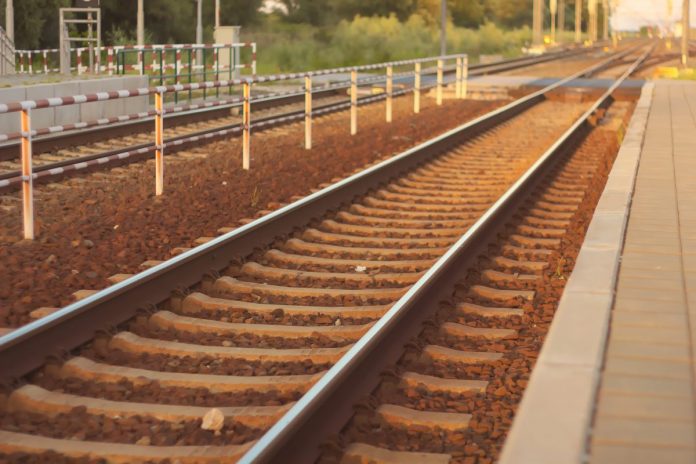Libor Lochman, Britta Schreiner and Hans Besser from CER – the Voice of European Railways, emphasise the importance of infrastructure investment throughout Europe…
Mobility is vital for the European Union’s internal market, for the quality of life of Europe’s citizens, and for society as a whole. Effective mobility requires a modern, efficient and multimodal infrastructure network, where transport modes are properly interconnected, and each mode is able to perform where it is most efficient. Such a system will transport people and goods at the lowest possible cost, with the highest efficiency and with the least emissions.
Investing in transport infrastructure is also essential for economic growth, and the creation of wealth and jobs. In 2011 the transport sector in 28 EU Member States directly employed 1.6 million people and generated €1.3tn in turnover1, or 10.2% of GDP. A recent study conducted by research company Ecorys 2 suggests that the impact on indirect employment in the rail sector is substantial: employing 1 person in the rail sector will lead to the creation of 1 other job in a related sector, such as manufacturing.
Defining Europe’s transport needs
Given the importance of the transport sector for economic growth, the European Commission set ambitious targets in the 2011 Transport White Paper, in particular for the rail sector:
• A shift of 30% of road freight over 300 kilometres to rail or inland waterways by 2030 and more than 50% by 2050;
• A tripling of the length of the existing high-speed rail network;
• A fully functional EU-wide multimodal TEN-T core network;
• The connection of all core network airports to the rail network by 2050.
In addition, the Europe 2020 Strategy, the EU’s agenda for growth and jobs for the current decade, imposes challenging climate change and energy targets on all parts of the economy, including transport: a 20% reduction of greenhouse gas emissions compared to 1990, raising the share of EU energy consumption from renewables to 20%, and a 20% improvement in energy efficiency.
The missing gap
These ambitious goals for a competitive and resource efficient transport system require substantial financial resources. Significantly more than the €1.5tn identified by the European Commission in the 2011 Transport White Paper will be needed between 2010 and 2030 in order to create a well-performing and environmentally sustainable transport network in Europe.
Despite different financing models, all European infrastructure managers struggle with the same common challenge of having to maintain their standards of quality and performance, while facing increasing expenditures on maintenance and upgrades resulting from an aging rail infrastructure.
At the same time, slow economic growth, a growing unemployment rate and an ageing population have put enormous pressures on national governments in Europe to finance transport infrastructure. Data from the International Transport Forum (ITF) 3 shows that the share of government spending on transport infrastructure is falling. The percentage of GDP spent on inland transport infrastructure in Western Europe fell from 1.5% in 1975, to 1.0% in 1982, to 0.8% in 2011. In Central and Eastern European countries (CEECs), it rose from 1.0% in 1995 to its peak of 2.0% in 2009, after which it dropped to 1.8% in 2011. Instead of serving as a catalyst, transport infrastructure investment has been trailing behind the growth of the economy.
Consequences of underinvestment
Poorly maintained infrastructure and deferred renewals and/or upgrades will lead to speed restrictions and delays. In the long term, a growing maintenance backlog and deferred investments will have serious cost and planning implications on the management of the rail infrastructure. It creates uncertainty and may lead to the closure of lines. A loss of competitiveness with respect to other modes will be inevitable.
A typical example of insufficient rail infrastructure financing can be found in South-East Europe. Due to a lack of financing, the rail infrastructure network over there has been running deficits in maintaining their network for many years. As a result there are thousands of permanent speed restrictions; additionally, numerous tracks had to be closed.
Current action to improve rail financing
Member states, European institutions and the rail sector have to work together to find solutions for ensuring adequate, efficient, appropriate and reliable long-term funding for the rail transport system. The European Union supports these efforts with different financial and political programmes.
One important example of this is the newly adopted Trans-European Transport Network (TEN-T) Regulation and its accompanying financing tool, the Connecting Europe Facility (CEF). Under the CEF, €26.3bn will be made available for financing transport infrastructure projects for the period 2014-2020, with a focus on improving technical standards, removing bottlenecks, missing links, and projects of European added-value. The majority of the funding will be reserved for rail and inland waterway projects. The Connecting Europe Facility is therefore an important step towards a sustainable transport network.
Another policy instrument which can lead to significant benefits in terms of rail infrastructure financing is the introduction of multi-annual contracts. Multi-annual contracts (MACs) between governments and infrastructure managers improve the predictability, efficiency and transparency of the use of funds for the construction, maintenance and renewal of infrastructure. In this type of contract, governments commit to pay a certain sum to the infrastructure manager each year for investments in infrastructure, in return for which the infrastructure manager commits to a series of quality and efficiency obligations. Multi-annual contracts thus facilitate a shift from compensation for expenditures to performance-related payments.
Directive 2012/34/EC reinforces the application of such contractual agreements in member states, and specifies the scope, structure and performance targets to be implemented by 16 June 2015. Such contracts force both parties to take a long-term view, and to develop maintenance plans on the basis of future demand and the infrastructure manager’s business plan, leading to better cost control and reduced unit costs.
Finally, together with the European Investment Bank, the European Commission is currently exploring innovative financing solutions, including the possibility of attracting private investors for funding rail infrastructure projects. Financial markets could fill the financing gap as long as rail projects can generate a positive rate of return on the investments.
What still needs to be done
The adequate financing of rail infrastructure is a necessary but not sufficient condition for the development of a modern and efficient rail system. Also necessary are fair and balanced framework conditions for all transport modes. Member states can introduce policy measures intended to change the behaviour of all players involved. Price signals play a crucial role in influencing traffic and travel behaviour in the transport system.
The introduction of a user-based financing system is one example of a government-driven policy measure for financing the wear and tear of transport infrastructure.
Such systems are used by governments in many European countries to finance maintenance and renewal expenses of motorways. Contrary to the rail sector, where track access charges are obligatory under EU law, user charges in other transport modes are non-compulsory. As a consequence, their use varies strongly between countries, leading to price distortions between modes and between member states. User charges can also be a tool for financing new infrastructure where there is high traffic demand with a high revenue stream, allowing user charges to remain at the level which the market can bear.
Another policy measure is the internalisation of external costs. Fully applying charges for external costs can generate revenues for member states and ensure financing for new transport infrastructure. Switzerland is a good example of the application of the polluter pays principle. The 57km-long new Gotthard Base Tunnel beneath the Swiss Alps is due to open in 2016/2017. The construction of the railway tunnel is funded by the Swiss public transport fund, which is fed mainly by the kilometre-based heavy vehicle fee (HVF) payable by all trucks over 3.5 tonnes using the Swiss roads. Calculated on the basis of total weight, emission level and kilometres driven, the aim of the HVF is to internalise the external costs of trucks, therefore applying the polluter-pays principle, and encourage more freight onto rail. In this respect, the EU is unfortunately still trailing behind their Swiss neighbour.
Conclusion
To sum up, the rail sector is ready to make its contribution to the customers and the environment, but can only do so if these basic principles for infrastructure financing are applied by all transport modes in a fair competitive environment.
1 EU Transport in Figures, EU Statistical Pocketbook 2014
2 The Economic Footprint of Railway Transport in Europe, Ecorys, October 2014
3 Spending on Transport Infrastructure 1995-2011, International Transport Forum, 2013
Libor Lochman
Executive Director
Britta Schreiner
Senior Adviser Infrastructure & Statistics
Hans Besser
Senior Infrastructure Adviser
CER
Tel: +32 2 213 08 70
www.cer.be
www.twitter.com/CER_railways











